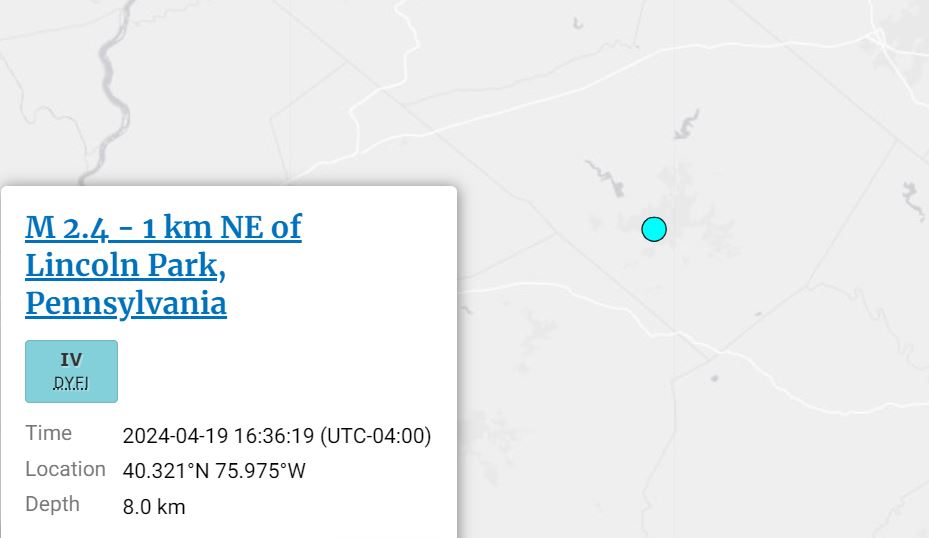Jerry Meaney walked to the end of Baltimore Avenue in Point Pleasant Beach Tuesday, looked down at the Manasquan River and spotted something dangerous in the water.
"As ugly as it was, it was actually quite beautiful," Meaney told the Asbury Park Press about what's believed to be a nasty stinging jellyfish. The Point Pleasant retiree said "it was a little frightening to look at, thinking I don't particularly want to swim with that thing,"
The sea creature is believed to be a box jellyfish--an exotic species with a severe sting, said Paul Bologna, director of the Marine Biology and Coastal Sciences Program at Montclair State University in Montclair.
"Sea nettles are nothing compared to these guys," he said, referring to the stinging jellyfish that have plagued Barnegat Bay in recent years. Box jellies can deliver "a pretty severe sting. They can be very painful," he said.
Bologna thinks this species of box jellyfish, or sea wasp, is a Tamoya haplonema, which delivers a sting that causes severe discomfort but isn't deadly. It's a warm-water jellyfish that can occasionally be found as far north as the Connecticut coast, but not in estuaries, according to a scientific book he cited.
Meaney's sighting, captured in Tuesday photos and video on his Facebook page--Barnegat Bay Island, NJ--created a buzz and concern about potential dangers for commercial fishermen and others who are out on or in the water this time of year. Meaney also captured a photo of a waterspout off Ocean County that day.
Of the 50 or so species of box jellyfish or sea wasps, only a few have venom that can kill people, according to the National Oceanic and Atmospheric Administration.
Local
Breaking news and the stories that matter to your neighborhood.
The Australian box jellyfish is considered the world's most venomous marine animal, according to NOAA.
Named because of their box-like body shape, box jellyfish have tentacles covered with biological booby traps called nematocysts--tiny darts loaded with poison, according to NOAA. The poison can cause paralysis, cardiac arrest and death within a few minutes of being stung.
Box jellyfish are found in warm coastal waters worldwide, but the deadly species are found largely in the Indo-Pacific region and northern Australia. The Australian box jellyfish is the largest, with body sizes up to 1 foot in diameter and thick, bootlace-like tentacles up to 10 feet long.
Meaney, 64, a retired emergency medical technician, said the jellyfish he saw swam several times to and from a channel in the Manasquan River near Gull Island.
"It seems like it had an intelligence that was far beyond any jellyfish or even some fish that you see," he said.
"It would go under water maybe a foot or two and then it would swim up along the surface," he said. "As it did, it would break the surface, almost if as if it was gulping air. It certainly looked like it was doing it on purpose. It kept going to the same spot, over and over."
"I was happy as could be," he said. "Besides the fact I didn't know what it was, I was happy that I got those pictures. This was something I'd never seen before."
State Department of Environmental Protection officials have seen Meaney's jellyfish photos "but have not been able to independently confirm" the sighting, according to DEP spokesman Larry Hajna.
"It's not unusual for more tropical species of sea critters--for example, barracuda--to follow or be randomly carried by the Gulf Stream into New Jersey waters," Hajna said in an email. “We don't know if that's the case with this particular jellyfish.”
Bologna said he was on the water in the Little Egg Harbor area Friday and didn't see any jellyfish, but it was windy and the water was stirred up.
"If (you) see one, there's a high probability that there's more than one in the area," he said.
The jellyfish may have come up with the Gulf Stream, and winds can bring them close to shore, he said. There was a nor'easter this week, with gale-force winds offshore that can move around a lot of water.
But it's unlikely that box jellyfish will become established in Barnegat Bay, said Bologna, adding that he's never seen a box jelly in these parts.
"I don't think these are anything we need to worry about," he said, but as the water warms with climate change, we might begin seeing them farther north.
Over the last five years, Bologna and others have collected probably seven or eight different species with toxins or venom in Barnegat Bay that "can give you a pretty good sting," he said. But sea nettles are by far the most common stinging jellyfish in the bay, he said.
"I think we're seeing more and more jellyfish and different types and public education is critical in keeping people safe," said Britta Wenzel, executive director of Save Barnegat Bay, a nonprofit environmental group.
Peter Rowe, director of research and extension at the New Jersey Sea Grant Consortium on Sandy Hook, said he thinks the box jellyfish seen in the Manasquan River is a stray.
They're "very fast swimmers compared to other jellyfish and directional," he said. "You don't want them anywhere near you when you're getting in the water and going down for a dive."
"I would figure that the cold weather will knock them out, but that's just a best guess," he said.
He warned that people should not try to capture a box jellyfish unless they have proper gear to do so.
"It's a cool sighting," Rowe said. "Don't go out trying to catch it just because it's there because it could be one of those ones that causes a lot of pain."



